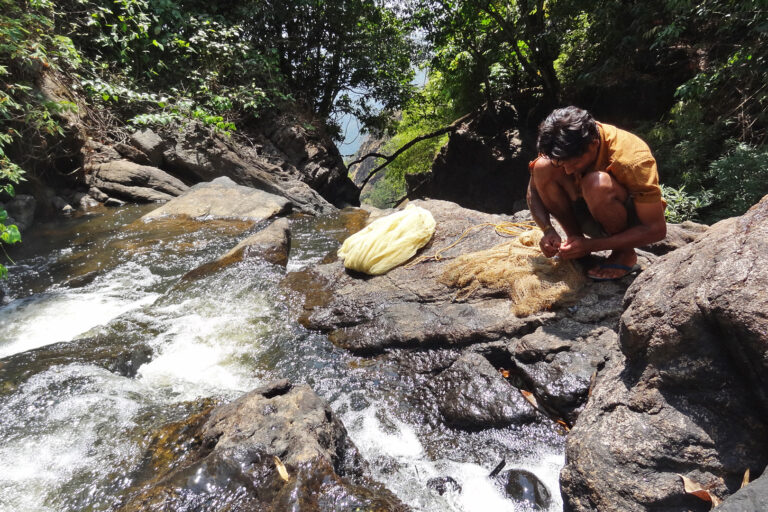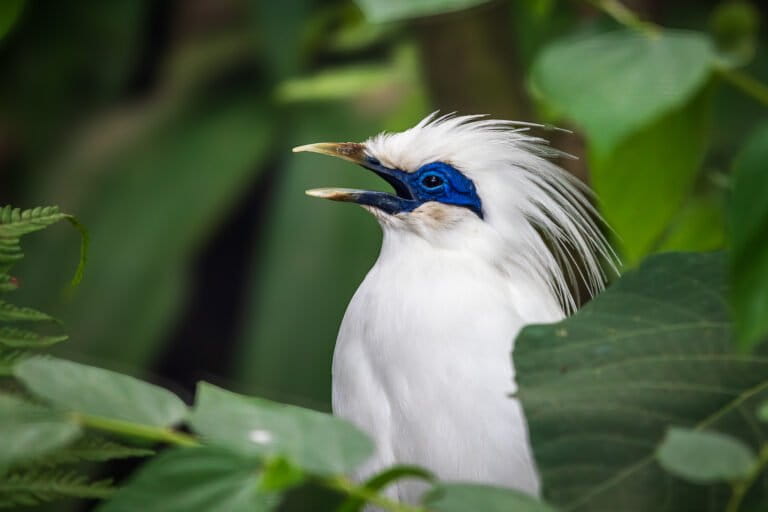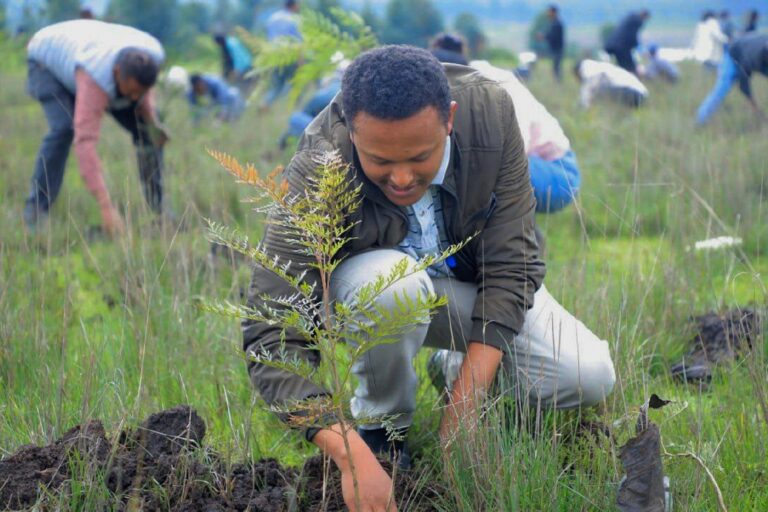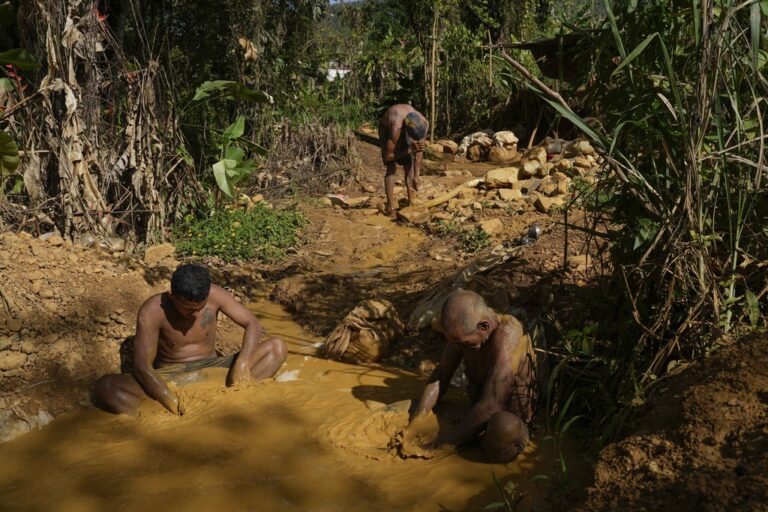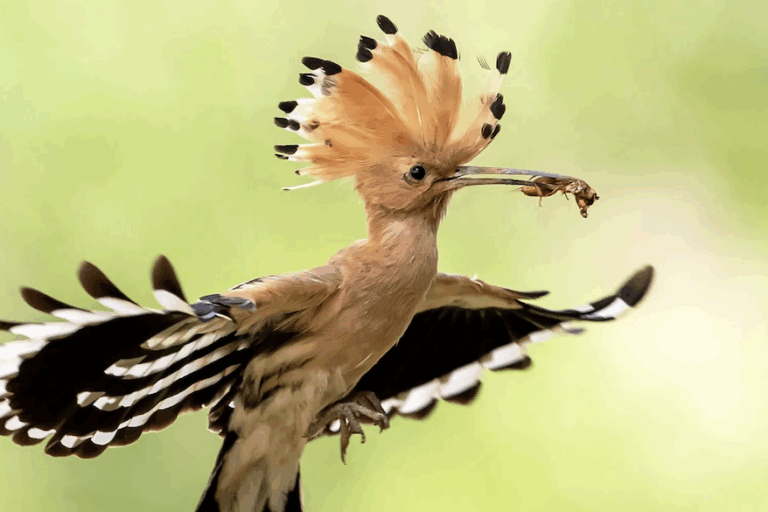- Redansyah first began working in conservation around Indonesia’’s Tanjung Puting National Park in the 1980s alongside renowned conservationist Biruté Galdikas.
- In a 20-year career, he has planted tens of thousands of seedlings in a once-pristine landscape beset by logging and fires since the 1990s.
- The 68-year-old has no plans to retire: “I just want to work on the job of introducing trees to this community.”
PANGKALAN BUN, Indonesia — For 20 years, Redansyah has awakened every day at 5 a.m. to plant trees here in the Pesalat forest area of Central Kalimantan province. The Indigenous Dayak begins the day searching the forest for seedlings, then prepares the ground for planting before nurturing the recently seeded.
“I can’t spend too long in the city, maybe a week at most,” Redansyah, commonly known as Ledan, told Mongabay. “It gives me a headache.”
The route to Ledan’s work area, here in the northwestern corner of Tanjung Puting National Park, crosses an 800-meter-long (2,600-foot) wooden bridge past a dense crowd of Dipterocarpaceae, meranti, Palaquium and Thymelaeaceae trees well known for traditional medical applications.
A covering of moss has grown over the bridge to the Pesalat rehabilitation area. Birdsong and cicadas sound over the surrounding peatland and the Sekonyer River, which flows a short distance from Pangkalan Bun, the capital of Central Kalimantan’s West Kotawaringin district.

The Pesalat community reforestation initiative is run in partnership with residents of Sekonyer village and the Friends of the National Park Foundation (FNPF), an NGO based on the island of Bali.
Ledan has been here since the beginning. He has planted around 180 seedlings every month since the FNPF partnership with the Sekonyer community began back in 2003, totalling maybe 40,000 trees in a career spanning two decades.
The Pesalat rehabilitation work is visible to ecotourism visitors in Tanjung Puting: It lies on a trekking route to the Tanjung Harapan Orangutan Rehabilitation Center.
Ledan’s interest in conservation began as a young man in 1980. Now 68, he began his working life as a research assistant in Tanjung Puting covering the Bornean orangutan (Pongo pygmaeus), a critically endangered species.
That was when he first met anthropologist and primatologist Biruté Galdikas, whose four-decade career documenting orangutans in Tanjung Puting began in the early 1970s. Tanjung Puting was then still a wilderness replete with towering ironwood and meranti trees.
“Back then, ironwood and meranti had a diameter as wide as a drum,” Ledan said. “That is hard to find now.”
What remains of the ancient ironwoods are jet-black tree stumps dotted over the landscape, a legacy of fires and wholesale logging that dominated the area in the late 1990s. Ledan recalled logging camps, consignments of timber in the harbor, and the constant buzz of chainsaws.
“Illegal logging was rampant,” he said, adding that the authorities at the time had no grip over the problem. “It was very sad.”

On one occasion Ledan and researcher Carey Yeager were chased out by the loggers. “Mr. Ledan, Carey — you have to leave today,” Ledan recalled being told at the time.
Indigenous communities endured dried-up wells as oil palm companies moved in. During Indonesia’s 2015 wildfire catastrophe, workers with Orangutan Foundation International, the organization founded by Galdikas, fought back fires in the southern half of the national park.
These experiences hardened Ledan’s resolve. He spent almost 20 years planting in the forest, but there are no instant results nurturing trees that live longer than a century.
“This ironwood is planted in 2004 and its diameter isn’t even 5 centimeters [2 inches],” he said, pointing to an ulin seedling planted almost two decades ago that had not yet grown 2 meters (6.6 feet) high.
The community forest center is not only the operations base for the Pesalat foresters, but also a place for others to visit from around the world’s largest archipelagic country.
Ariyadi, a young man from Sekonyer village, gained his first exposure to reforestation work here while still a teenager. “We planted and nurtured seeds,” he said.
“It is a place where we all learn together,” said Basuki Budi Santoso, a former manager of the FNPF, adding that the Pesalat site served as a pilot for effective affordable community-based restoration farther afield.
“The trial here has already been replicated in many other restoration areas,” he said.
The Pesalat project includes a plot of trees planted for traditional medicine, a field in which Ledan possesses a library of knowledge passed down by his parents.

The clutch of medicinal plants grown here includes saluang balum for kidney health and sensamuttan to regulate appetite, among other uses.
“On one occasion when I was weak and vomiting, I boiled some leaves and began to recover gradually,” he said.
Ledan’s life experience has made him a respected expert in Tanjung Puting, according to the government official in charge of the park.
“You just ask Pak Ledan,” said Murlan Dameria Pane, the government’s head of Tanjung Puting National Park. “He has memorized every type of tree.
Ledan can recognize and name around 300 trees growing in the forest of Tanjung Puting. He has no plans to leave.
“I want to stay here,” Ledan said. “Today I just want to work on the job of reintroducing trees to this community.”
Banner image: Ledan holding an ironwood sapling to be planted in Pesalat. Image by Lusia Arumingtyas/Mongabay.
This story was reported by Mongabay’s Indonesia team and first published here on our Indonesian site on June 23, 2022.








